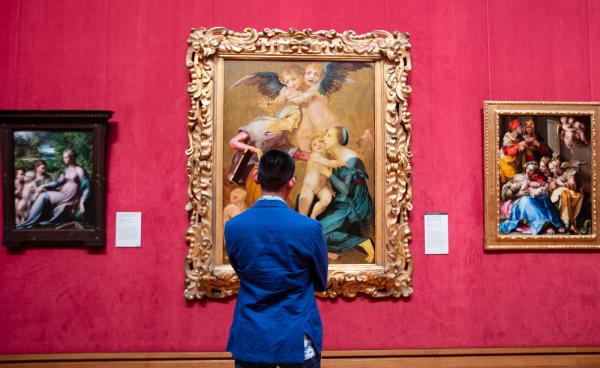As LACMA prepares for the construction of its new permanent collection building, masterpieces from our European paintings collection have gone to the Getty Center for a temporary stay, alongside their peers at the Getty. Learn more about the works in this post, originally published by the Getty.
Nearly two years ago, curators from the Getty began working with their counterparts at LACMA to select a group of paintings that would be displayed at the Getty Center while our neighbor institution undergoes construction. Getty curators reviewed dozens of paintings, looking for those that would meaningfully relate to the Getty’s collection of European paintings from the early Renaissance to the 19th century. Their selections span centuries; each highlights a different place and period of art history.
The paintings, which went on view recently, are interspersed throughout the paintings galleries and identified with special labels. Here’s what to see and where to find them.
1. Rosso Fiorentino’s Allegory of Salvation, 1521 (Getty Center, North Pavilion, Gallery N204)

Thanks to the installation of Allegory of Salvation by Rosso Fiorentino (Giovanni Battista di Jacopo), the second floor of the Getty Center’s North Pavilion, which houses medieval and Renaissance art, now features an array of spectacular depictions of the holy family.
This unfinished painting—a haunting and emotional depiction of the Virgin and Christ Child, Saint Elizabeth, and a young Saint John the Baptist with two angels—is flanked by two dramatic Mannerist works from the Getty’s collections: one by Parmigianino and another by Nosadella.
2. Hendrik Goltzius’s The Sleeping Danaë Being Prepared to Receive Jupiter, 1603 (Getty Center, East Pavilion, Gallery E201)
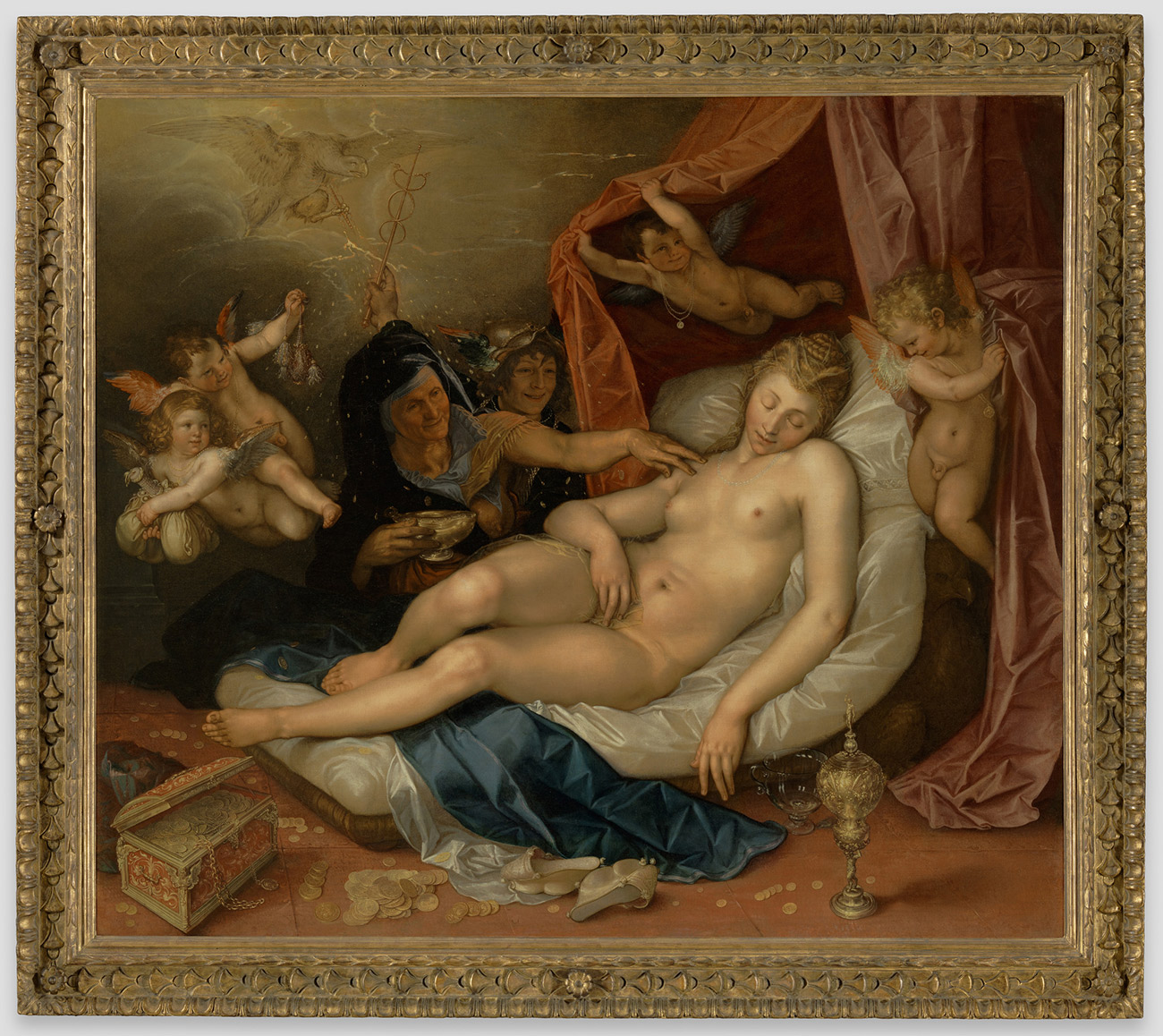
Danaë was a princess locked in a tower by her father in a futile attempt to keep her from being approached by men (an oracle predicted that his daughter’s son would have killed the king). In this painting by Dutch artist Hendrik Goltzius, Danaë sleeps in the nude on her silken bed, blissfully unaware that Mercury, Cupid, her handmaid, and a few playful putti are preparing for Jupiter’s surreptitious visit.
Across the way in the same gallery is a depiction of the same subject by Italian painter Orazio Gentileschi from the Getty’s collection. In this version, Danaë is wide awake and receiving with an outstretched arm the visit from Jupiter in the form of a shower of gold.
3. Guido Reni’s Bacchus and Ariadne, 1619–20 (Getty Center, East Pavilion, Gallery E201)

Bacchus and Ariadne is “iconic,” says Getty senior curator of paintings Davide Gasparotto, and “one of the great masterpieces in LACMA’s collection.” This refined picture depicts the loving couple—the princess Ariadne and the god of wine, Bacchus—on the Greek island of Naxos. A constellation in the sky represents the god’s wedding gift.
4. Rembrandt van Rijn’s Portrait of Marten Looten, 1632 (Getty Center, East Pavilion, Gallery E205)
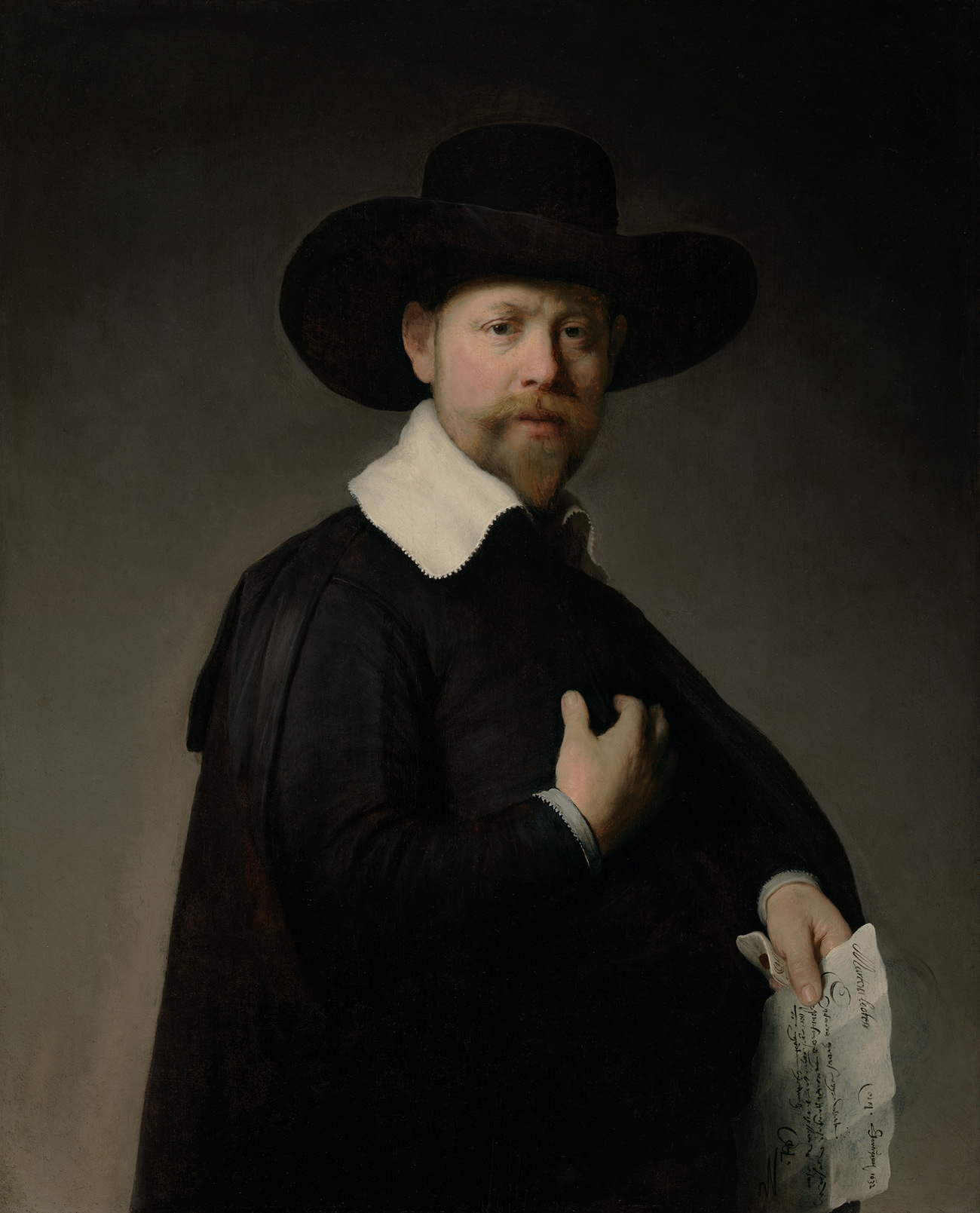
Portrait of Marten Looten is a commanding portrait of a wealthy merchant that resonates with the Getty’s standout collection of early Rembrandt paintings. It is also one of the first, and most important, pieces of art that J. Paul Getty personally acquired. Getty purchased the painting in 1938 and gave it to LACMA in 1953—a year before he opened his own museum in Malibu.
Find Looten in the Getty’s Rembrandt gallery next to the artist’s luminescent 1628 self-portrait, Rembrandt Laughing.
5. Frans Hals’s Portrait of Pieter Dircksz. Tjarck from about 1635–38 (Getty Center, East Pavilion, Gallery E204)
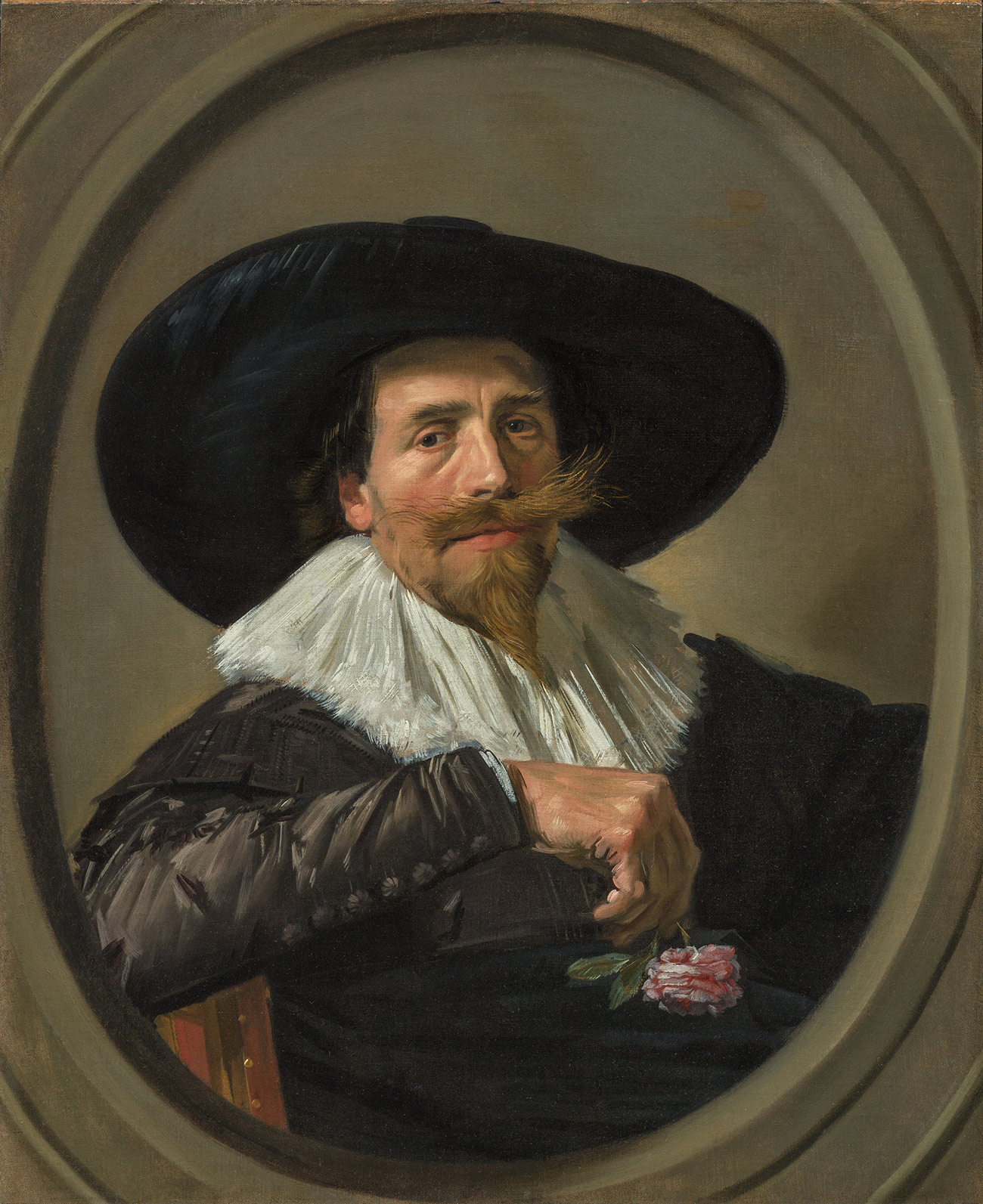
Dutch painter Frans Hals is regarded as one of history’s most revered portraitists. In this painting the sitter seems to be framed by stone, as if we are peering at him through a window in a wall. His elegant clothes and ample mustache are rendered in lively, vibrant strokes. He leans back in his chair, suggestively dangling a rose in one hand. This playful gesture may have been directed toward his spouse, who would have been portrayed in a companion painting.
6. Michael Sweerts’s Plague in an Ancient City, about 1650–52 (Getty Center, East Pavilion, Gallery E202)

Plague in an Ancient City is a harrowing and dramatic painting from 17th-century Flemish artist Michael Sweerts. He completed the painting just before returning to Brussels from a sojourn in Rome, where he studied the city’s ancient ruins.
The complex, large-scale picture is set in an imagined ancient cityscape with citizens suffering the ravages of the plague. The painting hangs in a powerful gallery in the Museum’s East Pavilion along with other epic or allegorical scenes by contemporary painters such as Rubens and Poussin. Across the gallery is Sweerts’s small but arresting portrait of a woman, long a standout in the Getty’s collection.
7. Paul Cézanne’s Sous-Bois, about 1894 (Getty Center, West Pavilion, Gallery W204)
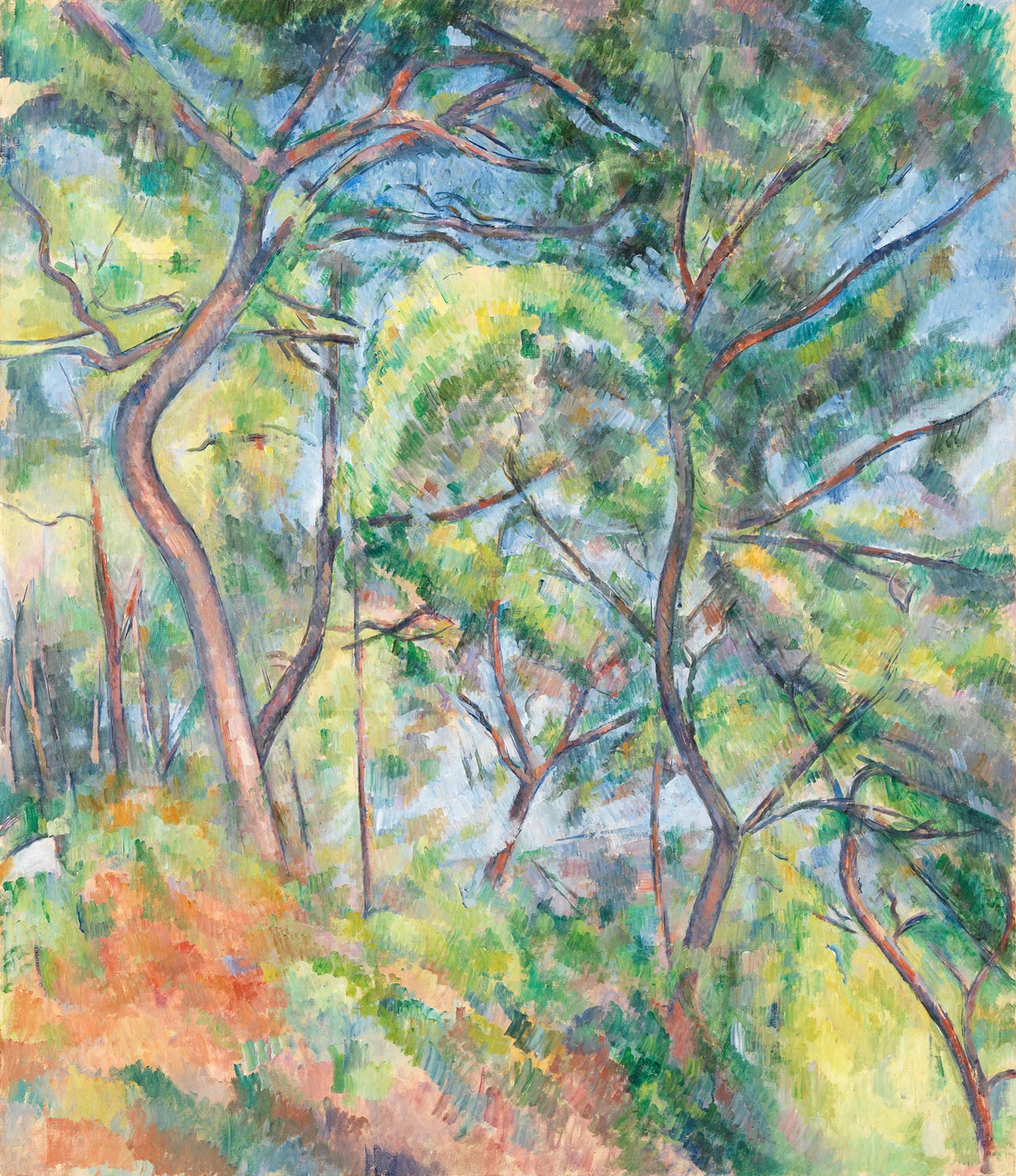
The Getty has four paintings by the great 19th-century French painter Paul Cézanne, including two compelling portraits. However, the museum does not have a landscape, which were among his most influential subjects. Sous-Bois, a lively and exuberant forest scene, has pride of place next to Vincent van Gogh’s similarly vibrant Irises, perhaps the most popular painting in the Getty’s collection.
This post was originally published on Getty.edu.



